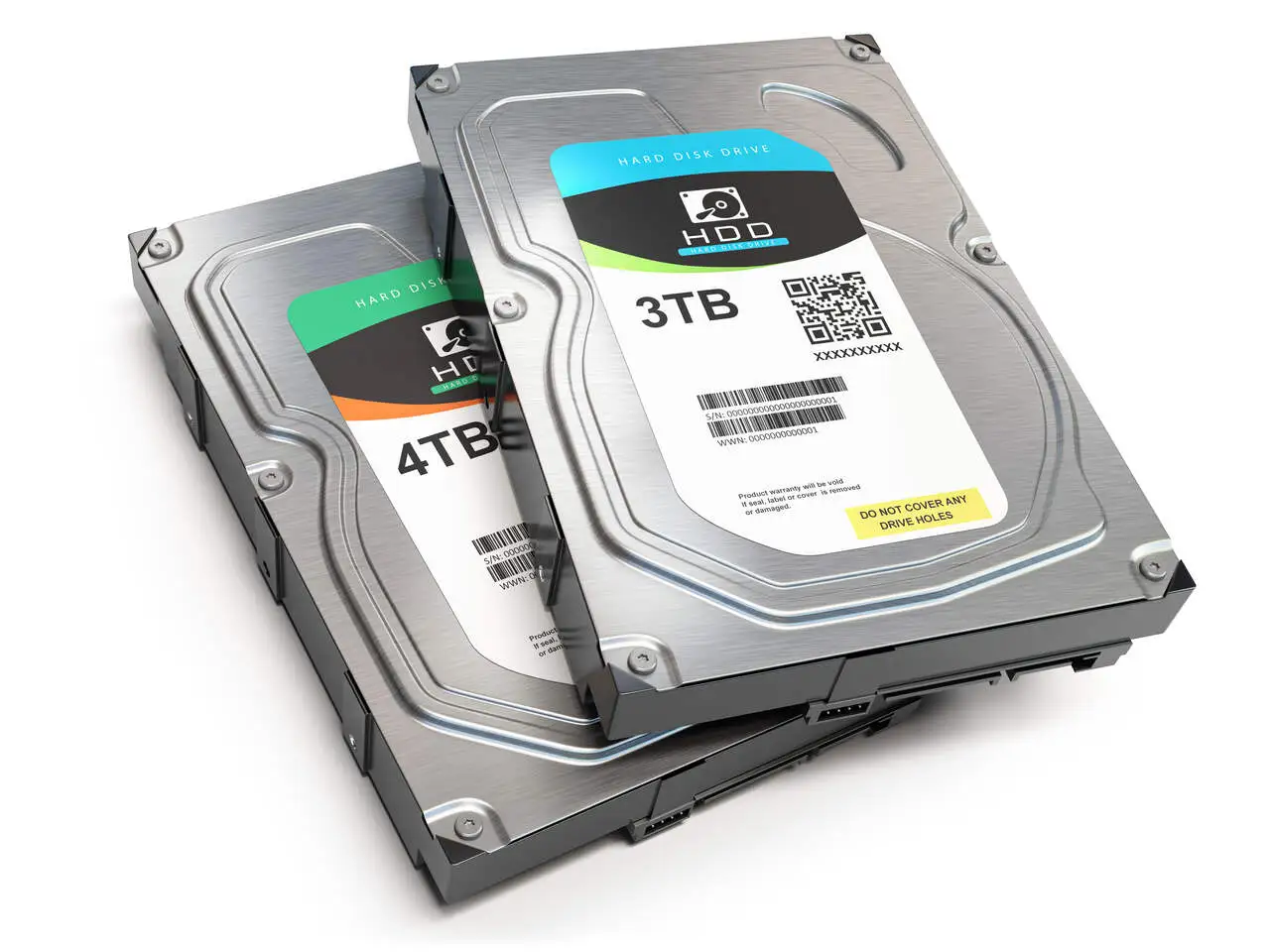Recovery of files affected by Dispossessor Ransomware
We can recover data encrypted by most ransomware extensions on any storage device
- VMware ESXi
- Microsoft Hyper-V
- Microsoft SQL Server
- Firebird
- Oracle
- VMware ESXi
- Microsoft Hyper-V
- Microsoft SQL Server
- Firebird
- Oracle

WORLDWIDE SERVICES
CASES OF LOCKBIT ATTACK
CASES OF BLACK CAT ATTACK
CASES OF HIVE LEAKS ATTACK
CASES OF MALLOX ATTACK
AMOUNT SAVED FOR NOT DEALING WITH HACKERS
Decrypt Dispossessor ransomware files
With our unique solutions, recovering Dispossessor encrypted files has become possible.
In the face of something so disastrous, there is little that can be done, especially if backups have been affected or are not up to date. The number of companies that shut down after having their data encrypted has reached staggering numbers.
In many cases, even after payment of the ransom, the decryption key is not sent by the Dispossessor criminals, and in these cases there is no higher authority to turn to.
Digital Recovery comes to the market with solutions capable of decrypting files affected by ransomware. We have solid numbers in our recovery projects.
Why Digital Recovery?
Having amassed over 23 years of experience, we have garnered a vast array of contented clients from across the globe. Our solutions can be executed remotely in most cases, and we offer multilingual support.
As Dispossessor ransomware attacks proliferate across the globe, we have honed our proficiency in ransomware decryption. Our exclusive solution is compatible with an extensive range of storage devices, virtual machines, RAID systems, storages (NAS, DAS, SAN), databases, servers, and much more.
Our specialists are highly qualified and have the latest technologies in the data recovery market, the main one is called TRACER, a proprietary technology with which we have obtained expressive results in the decryption of Dispossessor ransomware files.
We offer an advanced diagnosis that will allow us to understand the dimension of the attack, this first diagnosis can be done in the first 24 working hours from the time we receive the samples. After this process, we provide a commercial agreement and, once accepted, we kick off the process of decrypting the files.
All our solutions are supported by the General Data Protection Regulation (GDPR), through which we offer total security to our customers. We also provide a confidentiality agreement (NDA) written by our legal department. But if you feel more comfortable in providing an NDA written by your own company, we are open to analyse and accept it, if necessary.
We are
always online
Please fill out the form, or select your preferred contact method. We will contact you to start recovering your files.
Success stories
What our clients say about us
"We had a serious problem after a power failure of a NAS server in Raid 5. I immediately contacted DIGITAL RECOVERY. After a few days of hard work the problem was solved."

"One of our raid servers had stopped. After several attempts without solving the problem we found DIGITAL RECOVERY and 5 hours later, at 4am, the data was recovered."

"We appointed DIGITAL RECOVERY in a special case (of data loss) in a raid 5 storage. Digital Recovery was able to recover 32 million files so our customer was extremely satisfied.”

"Without a doubt the best data recovery company in Latin America. The contact Digital Recovery will always be saved on my phone, because inevitably I will need again."

"The quality of the service is excellent. The attention given to customer service is gratifying and the feedback we receive reassures us that we can trust the work and dedication."

Customer since 2017
"Great company, they saved me from a big problem! I recommend, fast service, my thanks to the Digital Recovery team for the attention and quick solution to the problem! Show!"

"Second time that I count with the agility and professionalism of the Digital Recovery team, they are very experienced and agile. I recommend to all"

"They helped me recover some data that I had thought was lost. I had a great experience with the team for their calmness, agility and transparency."










Answers from our experts
The retrieval of Dispossessor ransomware files is feasible because of our unique, in-house technology that enables us to identify and reconstruct the encrypted files in numerous instances. This procedure necessitates a thorough understanding of the affected storage device; otherwise, the files may become corrupted, making recovery unfeasible. Our specialists possess in-depth knowledge of all the primary storage devices, including RAID systems, Storages (NAS, DAS, SAN), Databases, Servers, Virtual Machines, and many more.
How to choose a company to decrypt my data?
Few companies in the world are able to decrypt Dispossessor ransomware files, so information about this possibility is scarce, to the point that many think that such a recovery is impossible. Also, there is a lot of incorrect information stating that decryption is not possible.
And among all these discussions there are serious companies that have developed such solutions, such as Digital Recovery.
Information about these processes and customers is confidential, so formal testimonials are scarce.
Given all this, it is important that you look for companies that are serious and that have several years of experience in the data recovery market and that make an expert available for the customer to communicate with from the first contact.
How much does the process to decrypt Dispossessor ransomware cost?
It is not possible to state the price of the process before the initial diagnosis, only after it is possible to measure the size of the damage caused by Dispossessor ransomware and analyse whether decryption will be possible or not.
After the initial diagnosis, a commercial proposal is made available and, once accepted, the recovery process is started. In most of the cases the payment is only made after the validation of the recovered files, done by the customer himself in a remote session.
Is negotiating with Dispossessor hackers a good option?
Cybercriminals rely on victims to reach out to them in the initial stages of the attack. They often use threatening language in their ransom demands, putting victims under immense stress and pressure to comply with their demands.
At Digital Recovery, we advise victims not to engage with these criminals directly. Instead, we encourage them to seek professional assistance from experienced experts in this field. Our team will work with you to analyse the situation, assess the extent of the damage, and determine the chances of successful recovery from Dispossessor.
Latest insights from our experts

Data Loss, a Real and Present Risk!
Data loss is a critical problem that affects individuals, companies and organisations of all sizes, and can result in devastating consequences, from the loss of

What is a zero-day attack?
A zero-day attack is a type of cyber threat that exploits a software vulnerability unknown to the developers or manufacturers of the software in question.

Best HD brands
When talking about the best hard drive brands, it’s important to consider various aspects such as reliability, performance, storage capacity and value for money. These
What you need to know
How to prevent a Dispossessor ransomware attack?
Preventing a Dispossessor ransomware attack requires a comprehensive cybersecurity framework, but that’s not all, let’s list some important points that you need to pay attention to.
- Organisation – Having documentation of the IT park helps a lot in the prevention process, in addition to the inventory of networks and computers. Develop rules so that new employees have clear company policy on the installation and use of programmes on computers.
- Strong Passwords – Passwords should be strong, containing more than 8 digits, including special ones. And do not use a single password for multiple credentials.
- Security Solutions – Have a good antivirus installed, keep all programmes up to date, especially the operating system. Besides the antivirus solution, you need a Firewall and endpoints. They will make sure that the system stays protected.
- Beware of suspicious emails – One of the most used means for invasion used by hacker groups are spam email campaigns, so it is vital to create a security and awareness policy for employees not to download attached files sent by unknown emails.
- Efficient backup policies – Backups are essential for any eventual incident, but even with this essential role many companies neglect it or create a backup schedule that is not effective. We have already assisted several clients that not only the data was encrypted, but also the backups. It is not recommended to keep online backups only. The best backup structure is 3x2x1, which is 3 backups, 2 online and 1 offline, in addition to creating a consistent routine of updating the backups.
- Beware of unofficial programmes – There are numerous paid programmes that are made available for free on the Internet, such as Windows, Office and many others. They may appear to be free at first, but in the future can be used as a gateway for future hacker attacks. Even if official programmes demand financial resources, they are a good investment and are also secure.
What is the most common means of access used by Dispossessor hackers to break into environments?
Hackers use a variety of methods to infiltrate a victim’s system, including downloading infected files, malicious links, RDP attacks, phishing, and spam emails. Their goal is to gain access to the system undetected, and to achieve this, the Dispossessor ransomware is often disguised to evade detection by security systems.
When it comes to tactics that rely on user action, hackers employ phishing techniques to trick unsuspecting victims into downloading Dispossessor ransomware onto their systems without realising it.
Is there any behaviour of my server that I can analyse to know if I am being attacked by Dispossessor Ransomware?
Suspicious behaviour such as high usage of processing, memory, and disk access should be thoroughly investigated to determine if a ransomware attack is in progress. Dispossessor Ransomware typically exploits a machine’s own resources to carry out the encryption process and exfiltration of data. Detecting the attack can also be done by observing changes in file extensions, although this method is more complicated as the encryption process may have already started.
What happens if I don't pay the Dispossessor ransom?
If you are the victim of a Dispossessor ransomware attack and you do not pay the ransom demanded by the hackers, several things could happen:
- Your data remains encrypted: If your files are encrypted by the Dispossessor ransomware, they will remain inaccessible until the encryption is removed. Without the decryption key provided by the attackers, you may be unable to access your data.
- The attackers may delete your files: Some Dispossessor ransomware attackers may threaten to delete your files if you do not pay the ransom within a certain timeframe. If you refuse to pay and the attackers follow through on their threat, you may lose all of your data.
- The attackers may leak your data: In some cases, the attackers may use a double-extortion tactic, in which they not only encrypt your files but also steal them and threaten to release them publicly if you do not pay the ransom. If you refuse to pay and the attackers follow through on their threat, your data may be released to the public or sold on the dark web.
Paying the ransom is not recommended, as it incentivizes attackers to continue their criminal activities and there is no guarantee that they will provide you with the decryption key or honor their promises. Instead, it’s important to take steps to prevent Dispossessor ransomware attacks, such as implementing strong cybersecurity measures, regularly backing up your data, and educating yourself and your employees about potential attack vectors.



